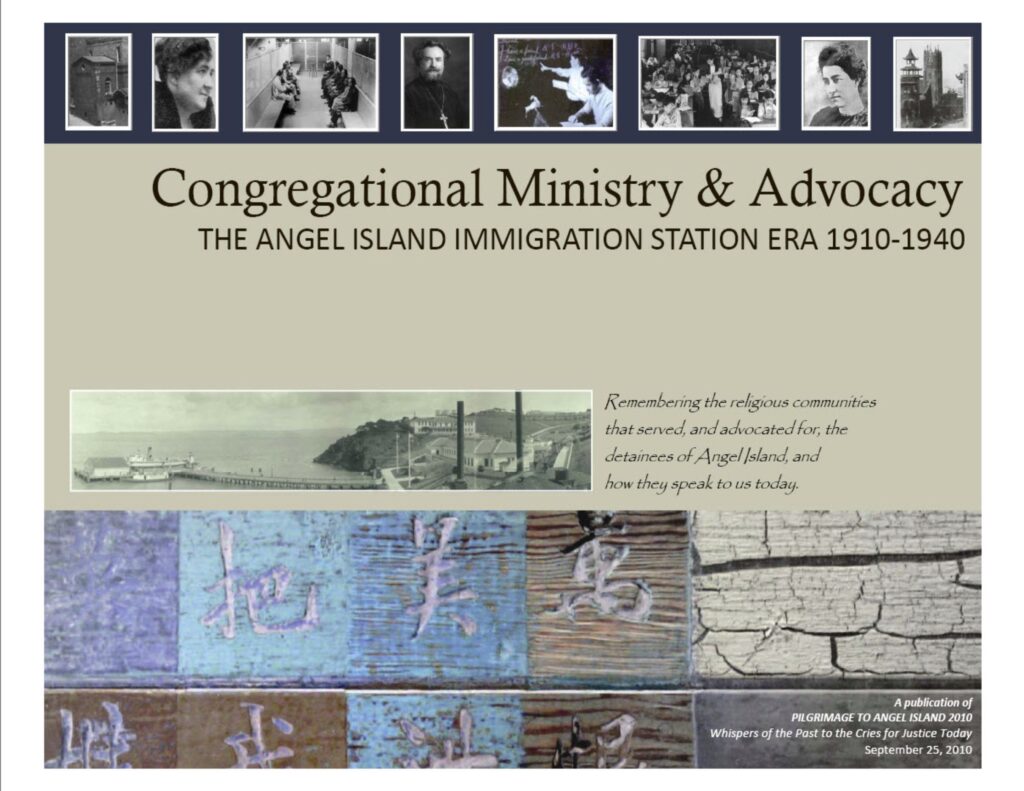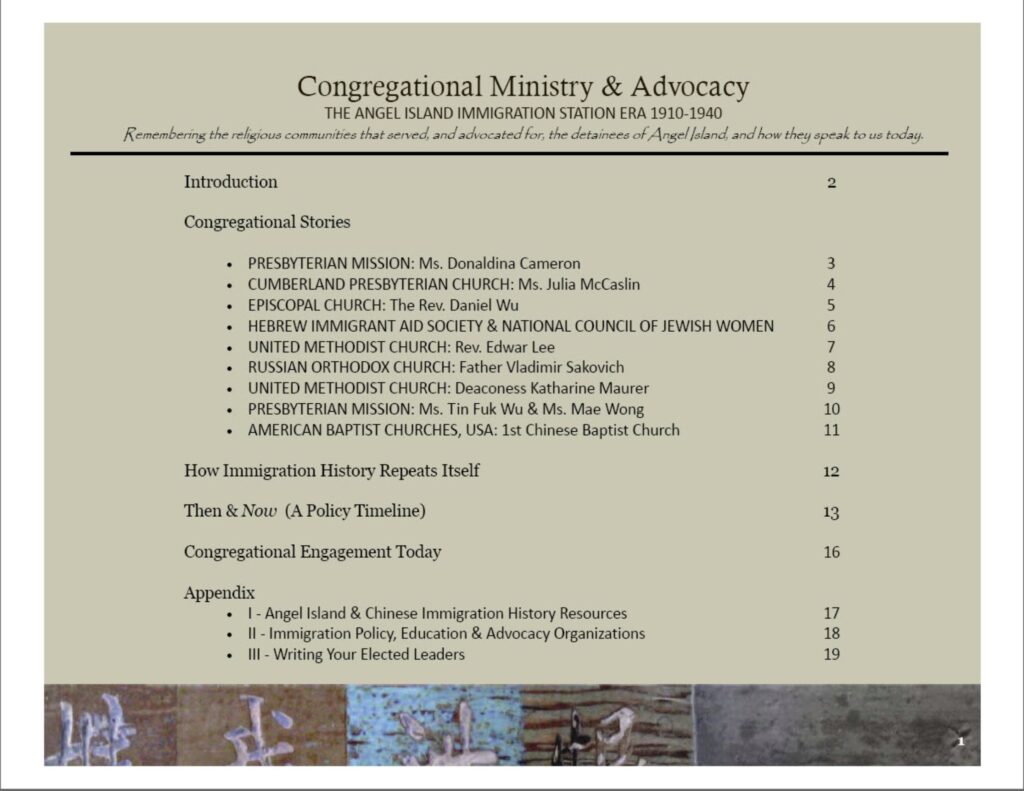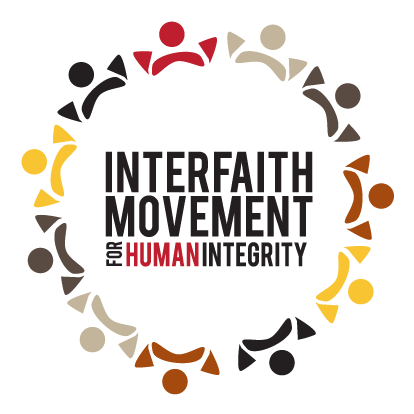

Preface
In the spring of 2010, a group of clergy and lay leaders of Chinese ancestry came together to plan a pilgrimage to Angel Island in commemoration of the 100th anniversary of its opening. Many of us had family connections to Angel Island, but knew little more than that our parents or grandparents were there at some time in their life. It was rarely something they liked to talk about. Thus, an early goal was to gather the Chinese community to recall the stories that were at risk of being forgotten, and to find healing and a deeper understanding.
In the process of planning this event, two other goals emerged. Firstly, we discovered striking parallels between the policies and discourse on immigration then and now and wanted to bring the similarities and connections to light. A hundred years ago, California and San Francisco was the focal point of the national immigration debate. Angel Island was built in 1910 in the middle of the San Francisco Bay to detain and control unwanted immigrants and laborers. At the time, the face of these unwanted immigrants was predominantly Chinese (then later Japanese, and other Asians).
Today the focal point for our nation’s immigration issue is the US-Mexico border. The public face of unwanted immigrants and laborers is largely Mexican and Latin American. Just as Angel Island was constructed to restrict Chinese immigration a hundred years ago, our government today is spending nearly $1.7 billion annually to keep out unwanted immigrants coming across the Southern border. Last year, nearly 380,000 immigrants were deported, exceeding the total number that were detained during Angel Island’s 30 years of operation. Like our Chinese ancestors, immigrants today are facing exclusionist laws, workplace exploitation, enforcement sweeps, family separations, long detentions and the constant fear of being deported.
Our second discovery was far more hopeful, for we uncovered forgotten stories of congregations and religious leaders who, during the Chinese Exclusion era, ministered to immigrants who were being held on the island. They sought to improve their living conditions, advocated for their release, and fought for reform of unjust policies. Recalling these stories* kindles our spirits to be faithful, and provokes us to ask ourselves: How are we to respond today?
We give thanks to all of those who contributed to the pilgrimage planning process and the contents of this book: Laurene Chan, Emma Chiang, Larry Chin, Alton Chinn, Lauren Chinn, Dale Ching, Buddy Choy, Doreen Der-McCleod, Casey Dexter-Lee, Rev. Norman Fong, Fr. Franklin Fong, Julie Gilgoff, Sharlene Hall, Bill Ong Hing, Rev. Vincent Jang, Greg Jue, Yvette Jimenez-Mota, Mary Fong Ko, Rev. Franco Kwan, Albert Lee, Brian Lee, Derek Lee, Erika Lee, Gordon Lee, Mary Leong, Larry Lew, Fr. Dan McCotter, Macrina Mota, Shirlene Leong Nakano, Sam Louie, Rev. Don Ng, Diana Rashid, Maria Sakovich, Justin Talbott, Eva Steligmann-Kennard, Anna Wong, Jeremy Wong, Eddie Wong, and Judy Young. A special thanks to Grace Urban Ministries for assisting in the conceptual development, editing and production of this publication. *The stories included in this book represent only the beginning. Many more, such as the story of the Paulist Catholic Fathers of St. Mary’s Church and the Stockton Sikh Gurdwara are forthcoming.
Co-editors
Deborah Lee, Interfaith Coalition for Immigrant Rights, CLUE-CA.
Craig Wong, Grace Urban Ministries.
9/20/2010
Questions or comments about this publication? You may contact Deborah Lee at dlee@im4humanintegrity.org or Craig Wong at cwong@gum.org
